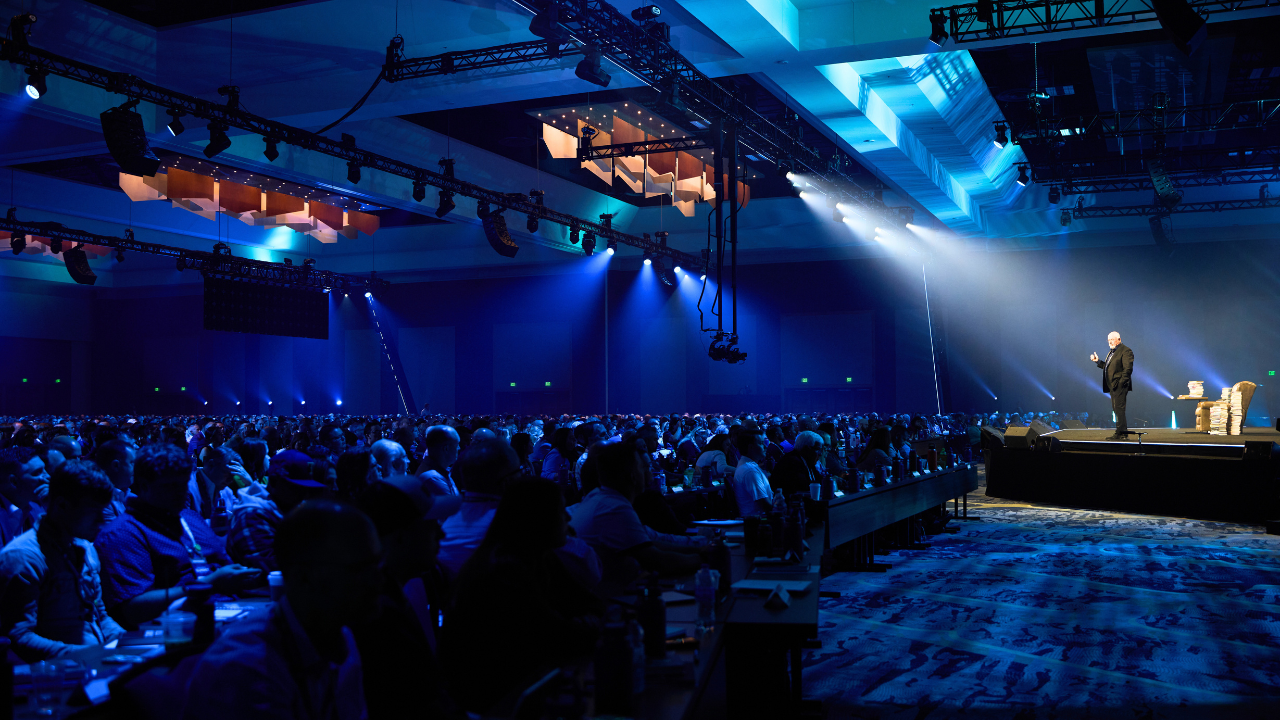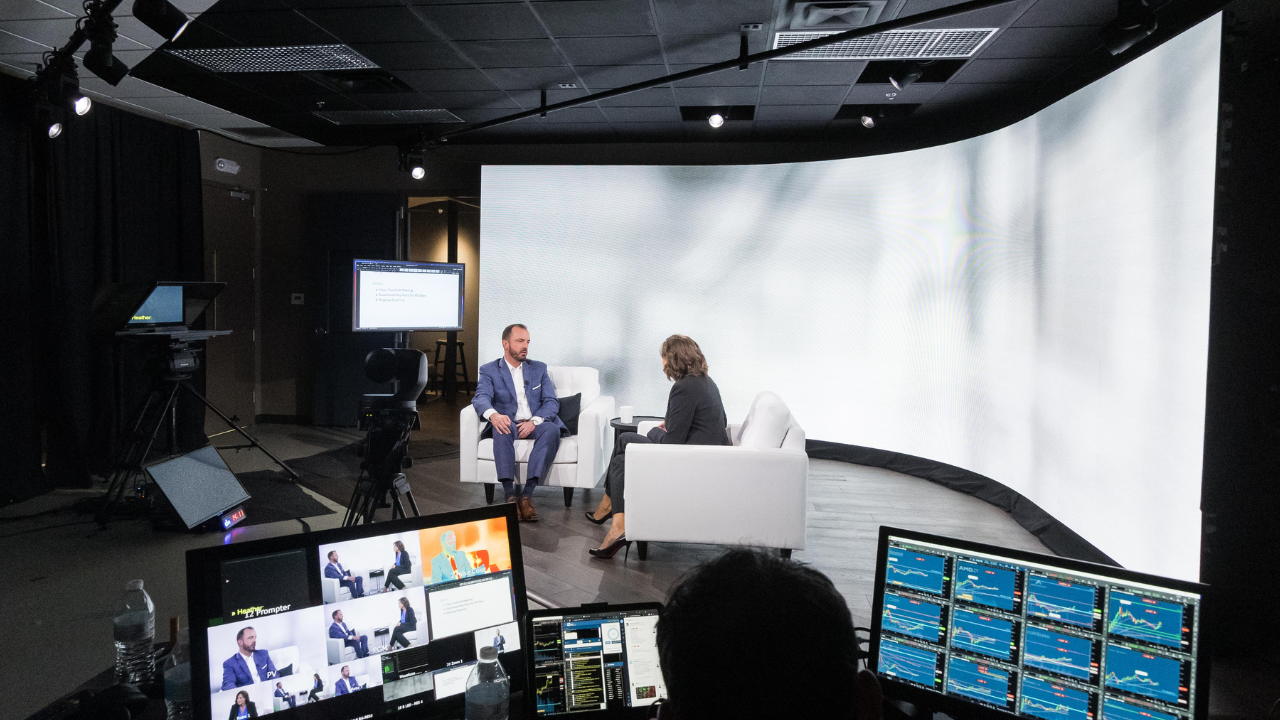The Moiré Effect on LED Walls and How To Prevent It
Published on: Tuesday, July 5, 2022 - 7:00am

Recently, I was watching the NFL draft. This was a multibillion dollar show on live television — and it was suffering from the moiré effect.
That got me thinking: How many people understand the moiré effect and how to avoid it?
In this post, we’ll talk about what the moiré effect is, why it matters, and what CTS does to prevent it.
What Is the Moiré Effect?
The moiré effect is the perception of movement in a solid object. It’s seeing movement that isn’t real.
Most commonly, we see the moiré effect on LED screens. It usually looks like rainbow patterns, waves, or stripes that aren’t part of the original image. It’s an optical illusion, like those old Magic Eye posters.
Why LED Walls?
In LED walls, each LED is one pixel of an image. The distance between the center of one LED to the next is called pitch. The closer the LEDs are to each other, the closer you can be to the screen and see a good image.
In your LED TV at home, for example, the pixels are right next to each other. You can see the image correctly at any distance, including right in front of the screen. LED walls, however, have gaps between the pixels. They may look like TVs from far away, but up close, you see the gaps between the pixels.
Pixel pitch can vary from 0.9mm to upwards of 20mm in size. A lower pitch means the audience can see a better picture closer, but it also comes with a higher price tag.
A simple (rough) trick is to take your pitch and multiply by three to determine the minimum distance in feet required to see the image properly. For example, a 4mm pitch requires the viewer to be 12 feet away to see a clear image.
This won’t necessarily eliminate the moiré effect since other factors play a part, but it’s a good place to start.
How Can the Moiré Effect Hurt an Event?
At every level of event, whether live or broadcast, big or small, you see LED walls. The moiré effect is one seemingly small detail that can drastically alter the audience’s perception of your event.
Below are some of the main problems the moiré effect can cause.

It’s Distracting
Imagine you have a presenter on stage at your event trying to deliver the keynote speech. Meanwhile, the audience is watching what looks like heat waves roll down the LED wall behind him.
Odd or unexpected movement behind a speaker or performer inevitably distracts an audience. Will they remember the speech or the distorted image?
It Looks Cheap
Regardless of what you paid for your equipment — and the rest of your event — and the effort you put in, the moiré effect diminishes the perceived quality of the event as a whole and makes a less-than-professional impression on the audience.
Remember the NFL draft? Sometimes the most expensive equipment in the world can’t stop the moiré effect from making the event look low-budget.
How To Avoid the Moiré Effect
Watching a concert in a huge stadium gives the audience plenty of distance from the LED wall to see the image clearly. But in a hotel ballroom for a conference, you have much more limited space.
If you choose an LED wall with a high pitch, your guests will have to sit farther back from the stage to see a clear image. And you’ll lose valuable seating space.
To avoid the moiré effect in a live event, pick a product that best fits the needs of the space. This means you’ll need solid measurements of the distance between the LED wall and the audience to choose an appropriate pitch.
It might be tempting to go with a less expensive, high-pitch product for your ballroom event. Just remember all the paid seats you’ll lose in order to set guests an appropriate distance back from the screens.
What Can Eliminate the Moiré Effect in a Broadcast?
When recording an event, we can make numerous adjustments to prevent the moiré effect.
CTS calculates measurements like depth of field, focal length, camera modes, and other inputs to discover whether we’ll have visual issues before we even arrive on site. Then we make adjustments that allow us to eliminate the moiré effect for our clients.
Below are four major factors we consider that can contribute to or mitigate the moiré effect:
- Camera Choice — The type of camera we choose (broadcast, film, hand) and the type of lens on that camera make a difference in dealing with the moiré effect.
- Depth — The depth of the stage and where the subject is on that stage, especially in relation to the LED wall, make a difference in the moiré effect. The distance of the camera to the LED wall and the subject also matter.
- Content — Color and patterns used in created content have a big impact on the moiré effect. Not all content works well on all platforms; even if it looks amazing on your phone, it may not translate to an LED wall. It’s important to stay in touch with your AVL partner even during content design so you can avoid the most common content issues.
- Lighting — In lighting a subject, something seemingly trivial — such as the number of lumens and foot candles — can make a difference. Lighting and cameras go hand in hand. Brighter lighting means a more constricted camera iris, which can help, but dim lighting requires a more open iris for longer exposure.
Include Your AVL Partner Early
CTS collects information from clients on every aspect of their event during the planning stages. Then we use that information to make calculations to help clients completely avoid the moiré effect.
So if you’re tired of the moiré effect, make sure to include your AVL partner in all aspects of planning — even in the content creation process. By getting involved early, AVL teams can help you discover the factors potentially contributing to the moiré effect and help you avoid costly mistakes.
Make sure you have a full-service provider who can help take your event all the way from planning to execution.



